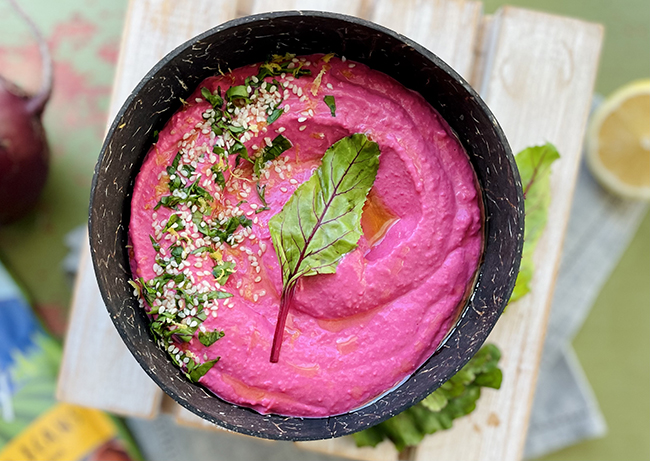The Art of Asparagus
26 Mar 2022
By Lisa Truesdale
Asparagus is known as “queen of the vegetables,” perhaps for the way it instantly fancies-up any meal. Or it might be because kings and queens throughout the ages have cherished and revered it. Egypt’s Queen Nefertiti declared it “the food of the gods,” and King Louis XIV of France reportedly had 6,000 asparagus plants in the kitchen garden at the Palace of Versailles. Yet those two had nothing on the Roman emperor Augustus, who so loved his asparagus that he had an entire “Asparagus Fleet” of ships that existed only to source as much of the green vegetable for him as possible.
What’s so special about asparagus? Well, for one, it’s considered to be an aphrodisiac, and that may or may not have anything to do with its popularity. It’s also “royally” good for you, since it’s packed with vitamins, minerals, antioxidants and fiber, plus it’s low in calories.
Although you can find asparagus year-round, the freshness, crispness and taste are at their peak in the spring. Find it at farmers markets, farm stands and grocery stores beginning in early April. To stand alone, grill it, roast it, sauté it or steam it. As an accent flavor, toss it into salads, soups, stir fries or pasta.
 Selection
Selection
The thickness of an asparagus stalk has nothing to do with age; a thin stalk will not mature into a thicker one. Choose the thickness based on cooking method: For grilling, roasting or broiling, you’ll want the thicker stalks that can stand up to the heat and not shrivel. Thin spears, which cook quickly, are ideal for stir–frying or tossing into pasta or salads.
Prep
The bottom ends of asparagus spears are woody and tough. Before cooking, either snap them off (where they naturally break) or, to save every precious bit, trim the ends and use a peeler to remove a few of the outer layers from the bottom half of the spear.
Flavor Combos
Although asparagus is delicious when simply roasted with a little olive oil, salt and pepper, it also pairs well with eggs, parmesan cheese, citrus (particularly lemon), garlic, bacon, tarragon, mushrooms and balsamic vinegar.
Asparagus Entrees
At his two Boulder restaurants, Blackbelly and Santo, Chef Hosea Rosenberg says he always—always—features asparagus in the spring. “However,” he says, “our menus are hyper-seasonal, and they change often and as quickly as our farmers bring new items to market.” Check back in late March or early April to see what he’s cooked up to take advantage of the veggie’s spring freshness and abundance.
Many BoCo restaurants also have asparagus on their menu all year long. At Zucca Italian Ristorante in Louisville, the Grilled Asparagus & Egg antipasti, featuring parmesan and truffle oil, has been one of the most popular offerings for a long time, says co-owner Sara Martinelli.
Look for asparagus-forward dishes at these other area restaurants:
Spruce Farm & Fish, Boulder
Jax Fish House, Boulder
Sugarbeet, Longmont
Jill’s Restaurant & Bistro, Boulder
24 Carrot Bistro, Erie
The Greenbriar Inn, Hwy 36 north of Boulder
Asparagus Benedict
Eggs Benedict, a beloved brunch dish, also makes a fancy (but low-maintenance) weeknight dinner. This classic recipe features asparagus. For an even heartier dish, you can also include Canadian bacon, ham, shredded lump crab, smoked salmon or lox. Complete your meal with a fresh fruit salad.

INGREDIENTS (for 2 servings)
8 fresh asparagus spears, trimmed and cut in half
1 envelope hollandaise sauce mix
4 large eggs
2 English muffins, split and toasted
1/3 cup shredded Swiss or Gruyère cheese
paprika and fresh chopped parsley for garnish (optional)
DIRECTIONS
1. Add 1 inch of water to a large saucepan. Insert a steamer basket and place asparagus inside. Bring to a boil, then cover and steam for 3–4 minutes until crisp-tender. Set aside.
2. Prepare hollandaise sauce according to package directions. (Of course, if you’re feeling ambitious, you can also make yours from scratch.)
3. In a large skillet, bring 2–3 inches of water to a boil. Reduce heat to a gentle simmer. Break cold eggs, one at a time, into a ramekin. Holding the ramekin close to the water’s surface, slip each egg into the water.
4. Cook eggs, uncovered, for 3–5 minutes or until the whites are completely set and the yolks are starting to thicken. Lift eggs gently out of the water, one at a time, with a slotted spoon, and drain on paper towels.
5. Lightly toast the English muffins.
6. To assemble: Place four pieces of asparagus on each muffin half. Top with a poached egg. Sprinkle with cheese. Top each with 3–4 tablespoons of hollandaise sauce. Garnish with paprika and/or parsley. Serve immediately.












